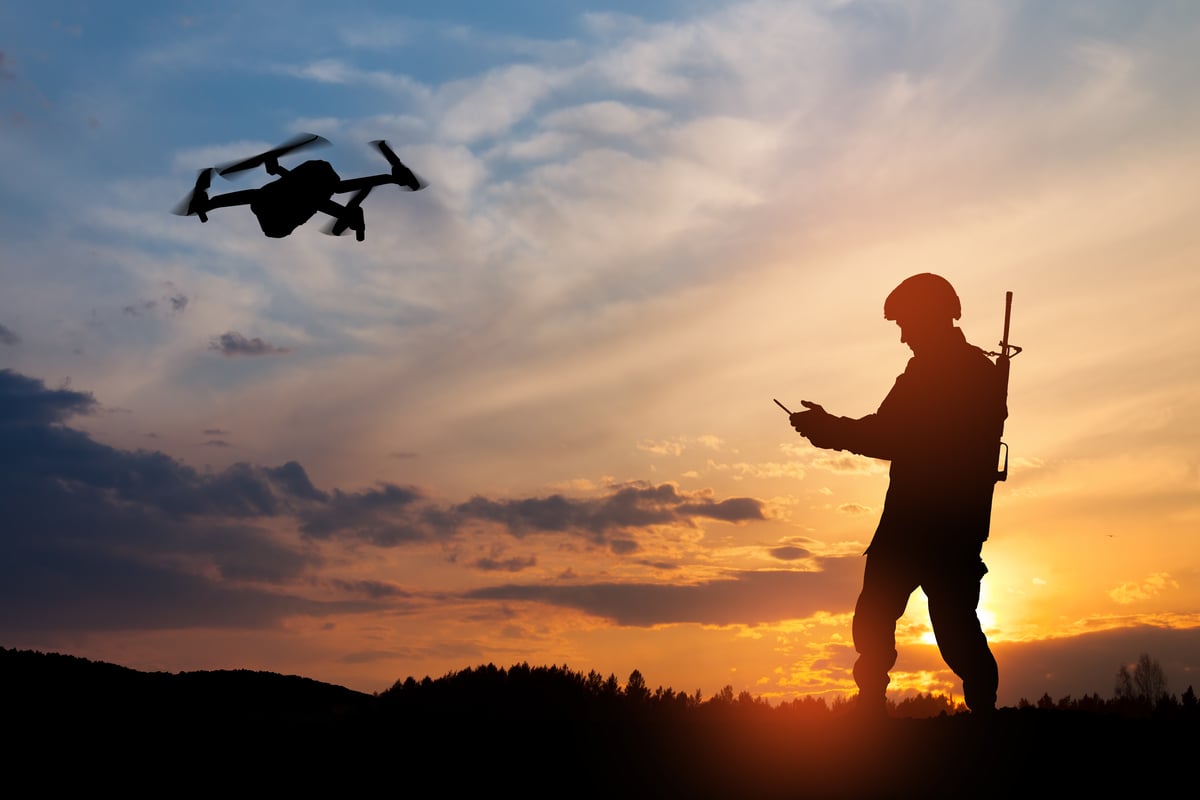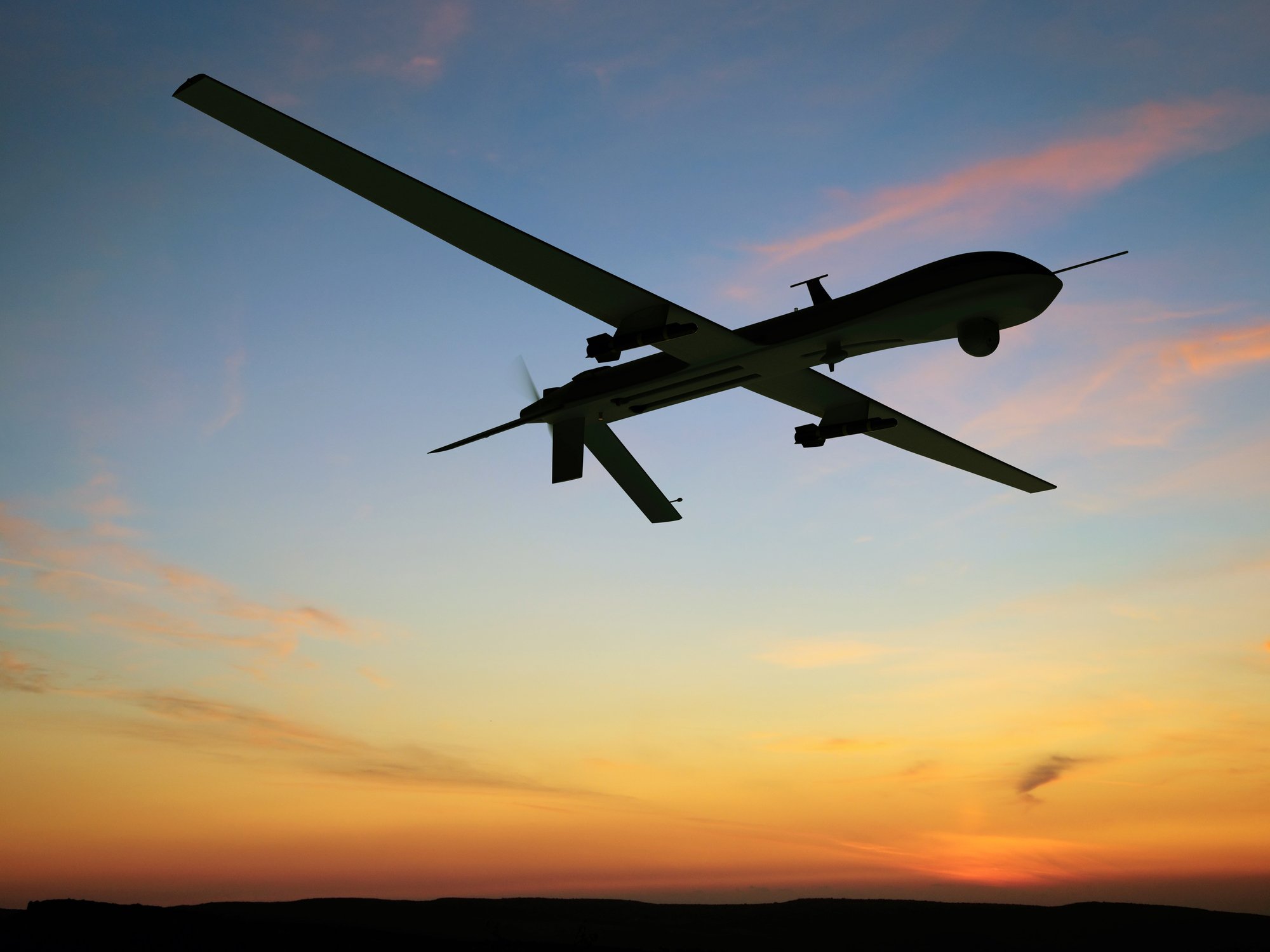2025 is shaping up to be "the year of the drone." According to data from online newspaper The Kyiv Independent, Russia launched more than 1,300 drone strikes (and 250 missiles) at Ukraine's capital city of Kyiv in 2024. That may sound like a lot, but over the course of the evening of July 9, 2025, Russia launched more than 700 attack and decoy drones at Ukraine in a single night.
Ukraine famously responded to its ongoing bombardment with a drone mission of its own in June -- "Operation Spiderweb," in which a few hundred drones, smuggled into Russia and controlled by remote pilots transmitting over that country's own cellphone networks, wreaked havoc on Russia's strategic bomber fleet, damaging or destroying more than three dozen aircraft in a matter of minutes.
Drones have also played a part in the recent Israel-Iran conflict. Israel's surprise attack on Iran on June 13, for example, involved drones launched from within Iran to take out its air defense systems preparatory to a wider bombing campaign. Iran's response reportedly involved the launching of more than 1,000 drones in an attack on Israel.
Numbers like these cannot fail to have captured the attention of Washington, D.C. In fact, they have captured Washington's attention. Last week, Secretary of Defense Pete Hegseth promised to "support our industrial base, reform acquisition, and field new technology" needed to equip the U.S. military "with the lethal small drones the modern battlefield requires."
But what does this mean to investors?

Image source: Getty Images.
A hard deadline for drone production -- and a hard target
Hegseth has proposed that every squad in the U.S. Army be equipped with "small, one-way attack drones" -- sometimes known as kamikaze drones or first-person view (FPV) drones -- by the end of the government's fiscal 2026. (That's Sept. 30, 2026.)
That gives us a firm calendar deadline: We can expect this directive to play out over the next 12 to 14 months.
As reported by BreakingDefense.com, Hegseth's primary focus is on small Group 1 and Group 2 drones, which weigh about 55 pounds or less. The Pentagon will be inviting bids from companies that can produce such drones for under $2,000, aiming to purchase 10,000 small drones over the next year.
As Pentagon programs go, this is pretty small potatoes, implying initial purchases of perhaps $20 million worth of hardware -- but this could be only the beginning. As one Army colonel interviewed by BreakingDefense.com explained, the Army will be using these first drones to help it answer questions like how many drones it actually needs to accomplish its mission. And the answer may turn out to be "a whole lot more than 10,000."
In that case, the size of this drone purchase program could grow dramatically.
Round up the usual suspects
Knowing this, drone technology companies like AeroVironment (AVAV +5.91%) and Kratos Defense and Technology (KTOS +4.45%) are certain to want to get in on the action. The big question, though, is whether they would be able to deliver the quantities of drones the Army will need at prices the Army is willing to pay.

NASDAQ: AVAV
Key Data Points
AeroVironment stock, for example, has surged nearly 50% since the start of June, when drones began dominating headlines. Problem is, the company's highest-profile FPV drone model -- the Switchblade -- is reported to cost anywhere from $50,000 to $170,000 each.
Likewise with Kratos. The stock's up more than 55% over the past several weeks. But Kratos is developing entirely different types of drones from those the Pentagon now wants. The company's XQ-58A Valkyrie drone, designed to accompany Air Force fighter jets as a "loyal wingman," is reportedly priced in excess of $4 million.
Other defense companies may have offerings that hit closer to the mark. For example, Palantir (PLTR 5.56%), a defense stock up-and-comer and a specialist in the kind of artificial intelligence that can be useful for guiding drones to their targets, has reportedly teamed up with lower-cost drone producer Red Cat. But Red Cat's Edge 130 drone still has a price tag of $43,000 -- cheaper than AeroVironment's and Kratos's offerings, but still much more expensive than the drones Hegseth is looking for.
Privately held defense contractor Anduril is likewise working to make affordable FPV drones, offering a Bolt-M variant that costs "in the low tens of thousands of dollars," according to the company. Again, that's closer to the mark, but still probably too costly for a drone whose day job is to be an expendable munition.
What it means for investors
Long story short, the competition to become the U.S. Army's provider of choice for cheap, reliable, FPV drones still looks wide open to me -- and there's no way to guess what company will win it. All I can say for sure at this point is that with drones that cost many times more than what Secretary Hegseth wants to pay for the uses he's envisioning, AeroVironment and Kratos aren't leading this race.







